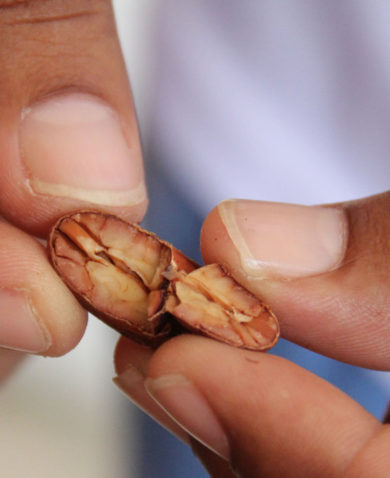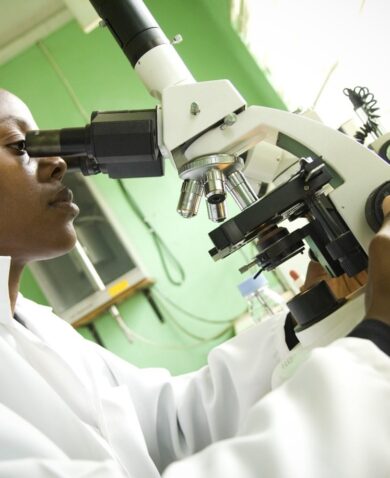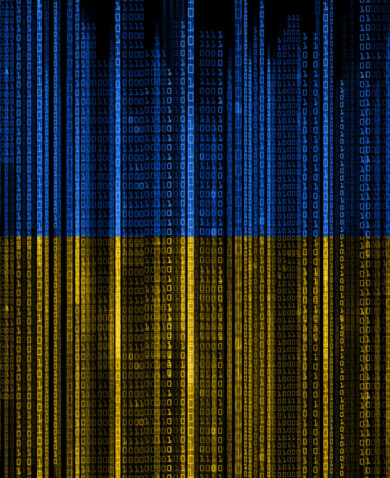
Why Electronic Payments Will Support Inclusive Growth in the Philippines
March 29, 2017 | 3 Minute ReadBookkeeper Rosalinda Hernandez used to pay fees in cash but now uses electronic payments. But what are electronic payments and why are they important? Melissa Cook explains.
People often give me puzzled looks when I try to describe my job here, and I don’t blame them. Since 2015 I have worked on an international development program that supports the Philippines’ shift from a cash-based economy to a cash-light economy, which will improve the livelihoods of Filipinos by getting more people involved in the formal economy. Got it? If so, I hope to see you at our next event. But if you’re like most people I meet, this explanation leaves more than a little to be desired, and usually we end up in a discussion about why what I just said is important.
It’s worth noting that the Philippines’ economy grew 6.8 percent in 2016 and has had similar annual growth rates since 2012 — making it among the fastest-growing economies in Asia. Yet during the same period, the country’s poverty incidence rate went down by a much smaller rate. In other words, Filipinos at or below the poverty line remain poor despite the country’s growth over the past five years.
Why is this happening? There are myriad possible reasons for this situation, but consider that among its growing population of 100 million people, nearly three-quarters of Filipinos do not have access to formal financial channels like bank accounts, credit, and insurance products — a critical barrier preventing inclusive economic growth. Think about that: the majority of Filipinos don’t keep their money in banks and lack access to the financial products that can stabilize a family during an emergency, in a nation of more than 7,000 islands where thousands of homes and livelihoods are literally washed away each year by natural disasters.
But there is a solution: the Philippines could potentially lift millions of currently unbanked but cell-phone-using citizens out of poverty by creating more versatile and accessible digital financial products and services that are available via mobile phone. Research by the McKinsey Global Institute (MGI) shows that, in emerging economies, giving unbanked people widespread access to digital payments and financial services accessible via mobile phones or the Internet leads to significant quantifiable and equitable economic opportunities, social development, increased GDP, and cost savings for financial institutions.
Banking in the Philippines is a headache for many customers because services are limited. For example, quickly sending and receiving money is an important need, particularly given the country’s significant migrant worker population. Currently, a person in the Philippines cannot digitally send money to another person who uses a different financial institution unless they can pay a high inter-bank transfer fee. Customers end up using inefficient work-around solutions like maintaining bank accounts at multiple institutions or waiting in long lines at banks to make deposits in person, which stifles financial dexterity.
USAID’s E-PESO activity in the Philippines conducted a nationwide door-to-door research study in 2016 that established a baseline for retail payments and electronic payments (e-payments), collecting data on the volume and value of monthly transactions using different payment instruments. These instruments included cash, check, e-money, and other e-payment instruments like credit cards, debit cards, and pre-paid cards. It also measured the awareness, trust, and usage among different segments of the population based on income, gender, age, and geographic location. The study identified the top three payment transactions as: household bills (73 percent), goods and services (57 percent), and airtime load (53 percent). The study valued the total size of the market for domestic payments to be roughly $7.4 billion per month, of which a meager two percent were made electronically. Despite the dominance of cash, the study found some silver linings, such as a high level of trust and awareness about e-payments among e-payments users and non-users (i.e. potential customers). Of current e-payment users, 76 percent had positive experiences as do 58.6 percent of non-users, especially with ATM or debit cards. This level of awareness and trust combined with the nearly 41 million bill payers who own cell phones creates a huge untapped market for e-payments in the Philippines.
What can we do? The key to getting more Filipinos to become regular e-payment users is to create an affordable way to send and receive money from any financial institution. The Philippines’ central bank, Bangko Sentral ng Pilipinas (BSP), refers to this as interconnectedness among bank and e-money accounts. The outlook for the customer is encouraging. The Philippines payments industry is taking important steps to heed the BSP’s call to make bank accounts interconnected by negotiating agreements that define the rules and processes to send and receive money electronically among various institutions — also known as an automated clearinghouse (ACH) agreement. Two ACHs are in the process of being formed now.
Addressing the challenges that underpin the e-payments ecosystem will liberate the Filipino consumer, strengthen the economy, and help Filipinos participate more actively in trade as consumers and producers on a global scale.






































